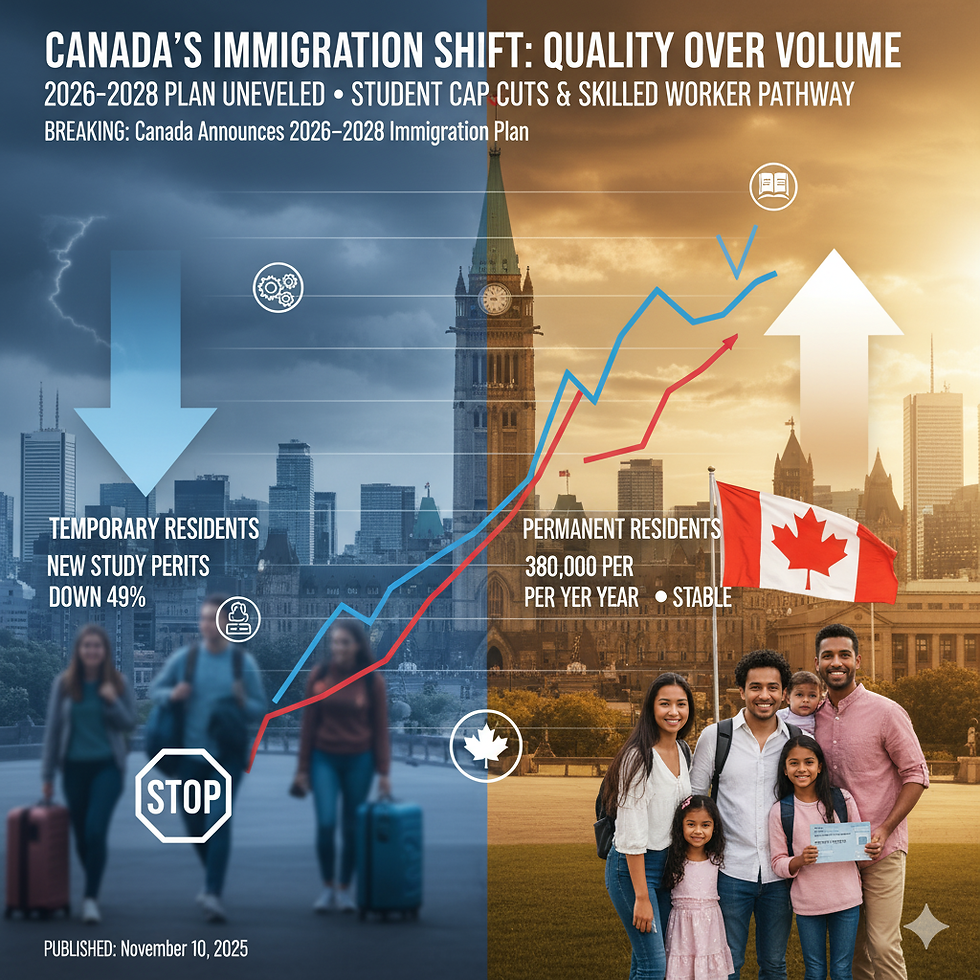Getting a Canadian Work Permit: What You Should Know
- Ansari Immigration

- Dec 15, 2022
- 3 min read
Updated: Jun 2, 2023
A Canadian work permit allows foreign nationals to work in Canada for a specific period of time. To be eligible for a work permit, foreign nationals must have a job offer from a Canadian employer.
The process of applying for a work permit varies depending on the country of citizenship and the type of work permit required. You might need to complete the Canadian government’s labour market test (known as the LMIA); your process will depend on that.
In this guide, we’ll show you how to navigate through the work permit processes. Ansari Immigration Inc has helped a variety of businesses in British Columbia with their LMIA application, please don’t hesitate to contact us with any questions or concerns.
What is LMIA?
The LMIA (Labour Market Impact Assessment) test is conducted by the government to ensure that there is a need for a foreign worker in the specific position being offered and that there are no qualified Canadians who could fill that role. The ESDC is responsible for ensuring that the LMIA process is followed and that all employers who wish to hire foreign workers go through the proper channels.
A positive LMIA means that the Canadian government has approved foreign workers coming to Canada to work. A negative LMIA means that the government has not approved foreign workers coming to Canada to work.
In order to hire a foreign national, employers in Canada must first obtain a positive or neutral LMIA from ESDC. Once the LMIA is granted, they can apply for a work permit from the federal Department of Immigration, Refugees and Citizenship Canada (IRCC). Once the work permit is obtained, the foreign national can move to Canada and begin working for the employer.
Exemptions for LMIA
There are some cases where a foreign worker does not need an LMIA in order to work in Canada. These work permits are commonly referred to as the LMIA Exempt Work Permits. Here are some of the exemptions:
International Agreements
Foreign workers who come to Canada under international agreements such as the North American Free Trade Agreement (NAFTA), Comprehensive Economic and Trade Agreement (CETA), or Comprehensive and Progressive Agreement for Trans-Pacific Partnership (CPTPP) do not need an LMIA.
Benefits of Canadian Interest
There are some cases where the foreign worker’s entry into the country is to the benefit of the country. Some examples include highly skilled workers, athletes, and religious leaders.
Other examples include international exchange for students, socioeconomic or cultural benefits, refugee support, and more.
Applying for a Canadian Work Permit
Once an employer has been approved to hire a foreign worker, they need to provide that worker with a copy of the approval letter and a job offer letter. The foreign worker will then use those documents to apply for a work permit.
The foreign worker will need the LMIA approval letter, the job offer letter, and the CAQ (if applicable) to apply for a work permit. Depending on their country of citizenship, they may also need a temporary residence visa (TRV).
A Canada Border Services Agency (CBSA) officer will give the official work permit to a foreign worker upon arrival in Canada.
Conclusion
The LMIA process can be complex and confusing. However, following the steps outlined above will ensure that an employer completes the process correctly and efficiently.
If you have any questions about the LMIA process, Ansari Immigration Inc. has you covered. We offer immigration professional guidance to make your move to Canada much more accessible. Get in touch with us today to learn how.
You can always book a consultation session with one of our experts if you have any questions with your LMIA application.




Comments